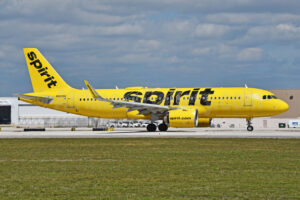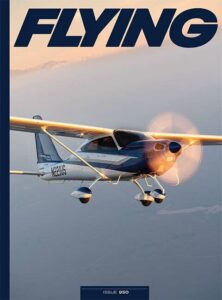A company developing autonomous flight systems in partnership with Honeywell, Leonardo, Boeing, and NASA has been enlisted to put its technology to the test in some of the world’s most demanding environments.
Pittsburgh-based Near Earth Autonomy on Thursday said it received a $790,000 contract—part of a larger agreement valued at $4.6 million—to provide “miniaturized” autonomy systems for the U.S. Marine Corps Tactical Resupply Unmanned Aircraft System (TRUAS) program. Prime contractor Survice Engineering, which builds a Group 3 UAS platform called the TRV-150, awarded the contract for delivery of Near Earth’s Firefly system by this summer.
Naval Air Systems Command (NAVAIR) will test the lightweight system’s ability to deliver critical cargo to contested, hard-to-reach areas—without putting UAS pilots in harm’s way.
“Near Earth’s system enables the TRV-150 to autonomously detect obstacles, identify safe landing zones, and complete resupply missions with greater reliability,” said Mark Butkiewicz, vice president of applied engineering for Survice Engineering, in a statement. “We are excited to be able to provide an added capability that can improve the warfighter’s ability to sustain operations in contested and confined battlespaces, helping ensure critical supplies reach the warfighter whenever and wherever they are needed.”
It took Near Earth about a decade to make an autonomy system small enough for UAS. The company started out designing systems for large military rotorcraft, later branching out into electric vertical takeoff and landing (eVTOL) designs and forming a partnership with Honeywell and Leonardo to support its defense work. Over time, it managed to miniaturize the technology for installation on small drones.
The company’s Firefly system is the culmination of that effort. It is compact and lightweight, capable of identifying safe flight paths and landing zones without sacrificing range or payload. Using an array of cameras, sensors, and optional lidar, it can detect trees, buildings, vehicles, and other obstacles—day or night—and enable landings on grass, gravel, concrete, or soil.
Crucially, all of this occurs without the need for personnel to scout obstacles or landing sites that are beyond the visual line of sight (BVLOS). BVLOS is a highly coveted approval in the commercial drone industry because it can extend the range of operations. For the military, it could be a way to make operations safer.
“Without the need for premapped routes or clear landing zones, we’re reducing risk to personnel and ensuring that essential supplies reach frontline units faster and more reliably than ever before,” said Sanjiv Singh, CEO of Near Earth.
Credit: flyingmag.com










